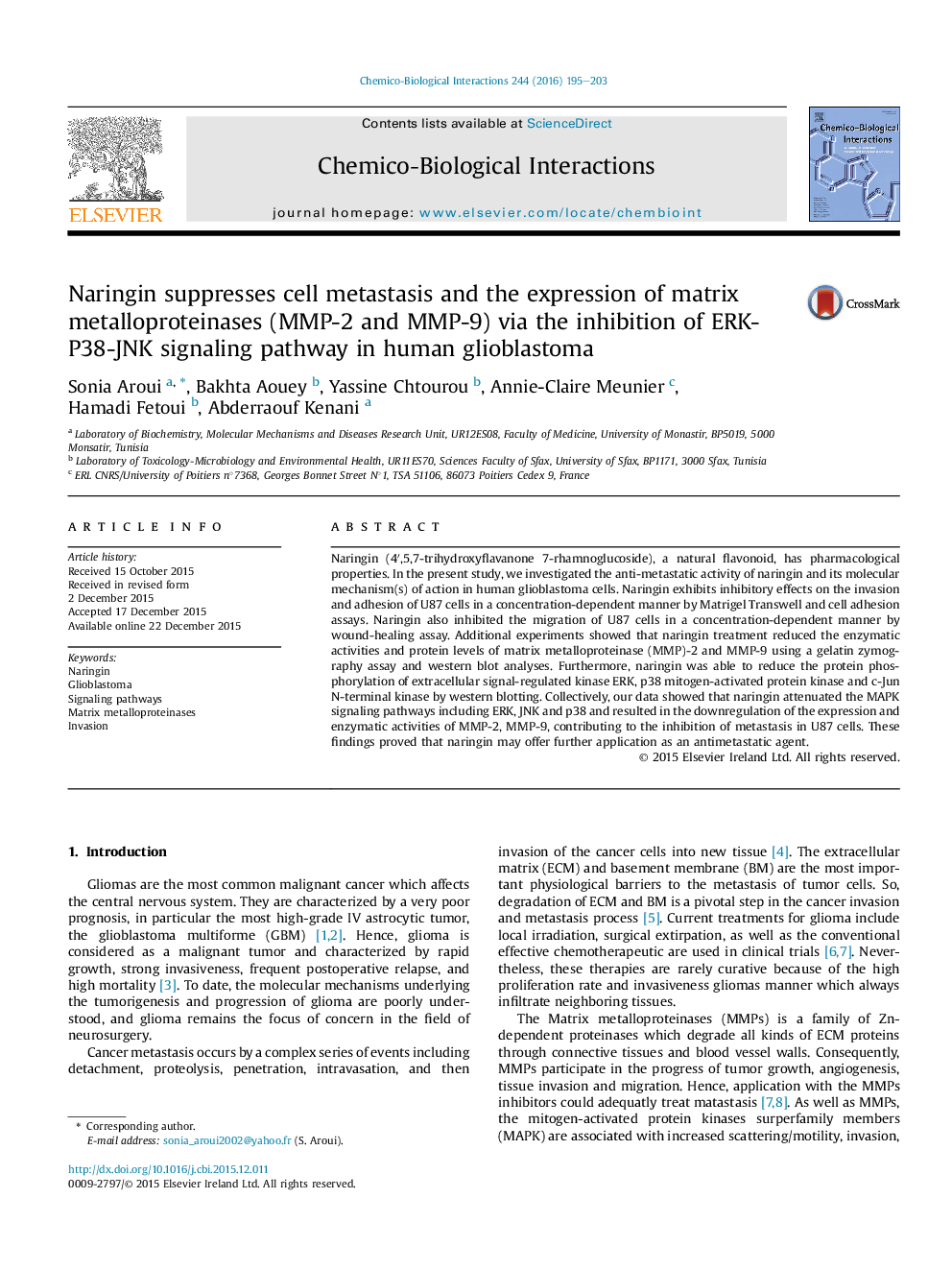| Article ID | Journal | Published Year | Pages | File Type |
|---|---|---|---|---|
| 2580037 | Chemico-Biological Interactions | 2016 | 9 Pages |
•Effect of naringin on human glioblastoma cells (U87) was assessed.•Naringin exhibited inhibitory effects on the invasion and adhesion of U87 cells in a concentration-dependent manner.•Naringin downregulated the expression and enzymatic activities of MMP-2, MMP-9.•Naringin attenuated the MAPK signaling pathways including ERK, JNK and p38.
Naringin (4′,5,7-trihydroxyflavanone 7-rhamnoglucoside), a natural flavonoid, has pharmacological properties. In the present study, we investigated the anti-metastatic activity of naringin and its molecular mechanism(s) of action in human glioblastoma cells. Naringin exhibits inhibitory effects on the invasion and adhesion of U87 cells in a concentration-dependent manner by Matrigel Transwell and cell adhesion assays. Naringin also inhibited the migration of U87 cells in a concentration-dependent manner by wound-healing assay. Additional experiments showed that naringin treatment reduced the enzymatic activities and protein levels of matrix metalloproteinase (MMP)-2 and MMP-9 using a gelatin zymography assay and western blot analyses. Furthermore, naringin was able to reduce the protein phosphorylation of extracellular signal-regulated kinase ERK, p38 mitogen-activated protein kinase and c-Jun N-terminal kinase by western blotting. Collectively, our data showed that naringin attenuated the MAPK signaling pathways including ERK, JNK and p38 and resulted in the downregulation of the expression and enzymatic activities of MMP-2, MMP-9, contributing to the inhibition of metastasis in U87 cells. These findings proved that naringin may offer further application as an antimetastatic agent.
